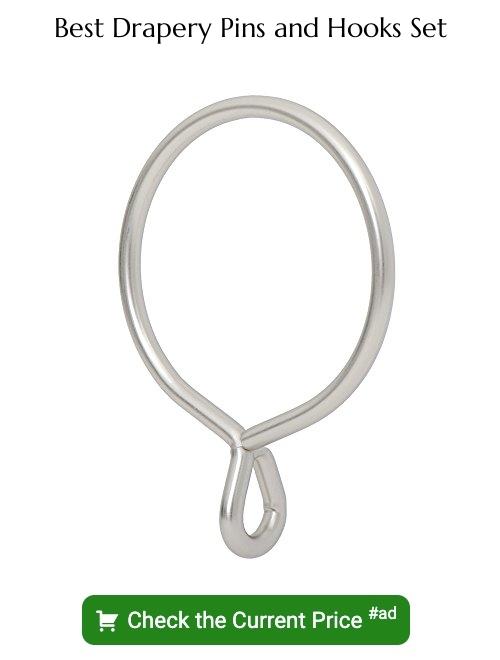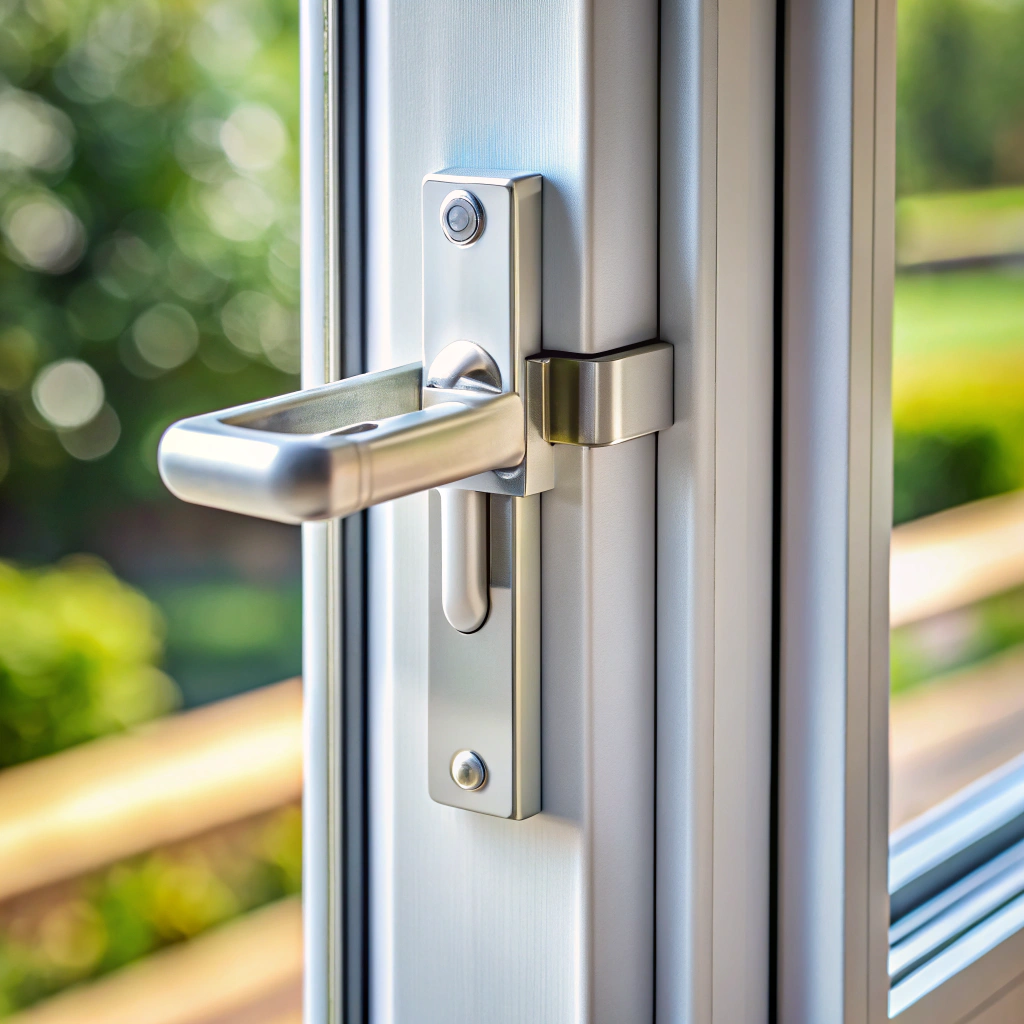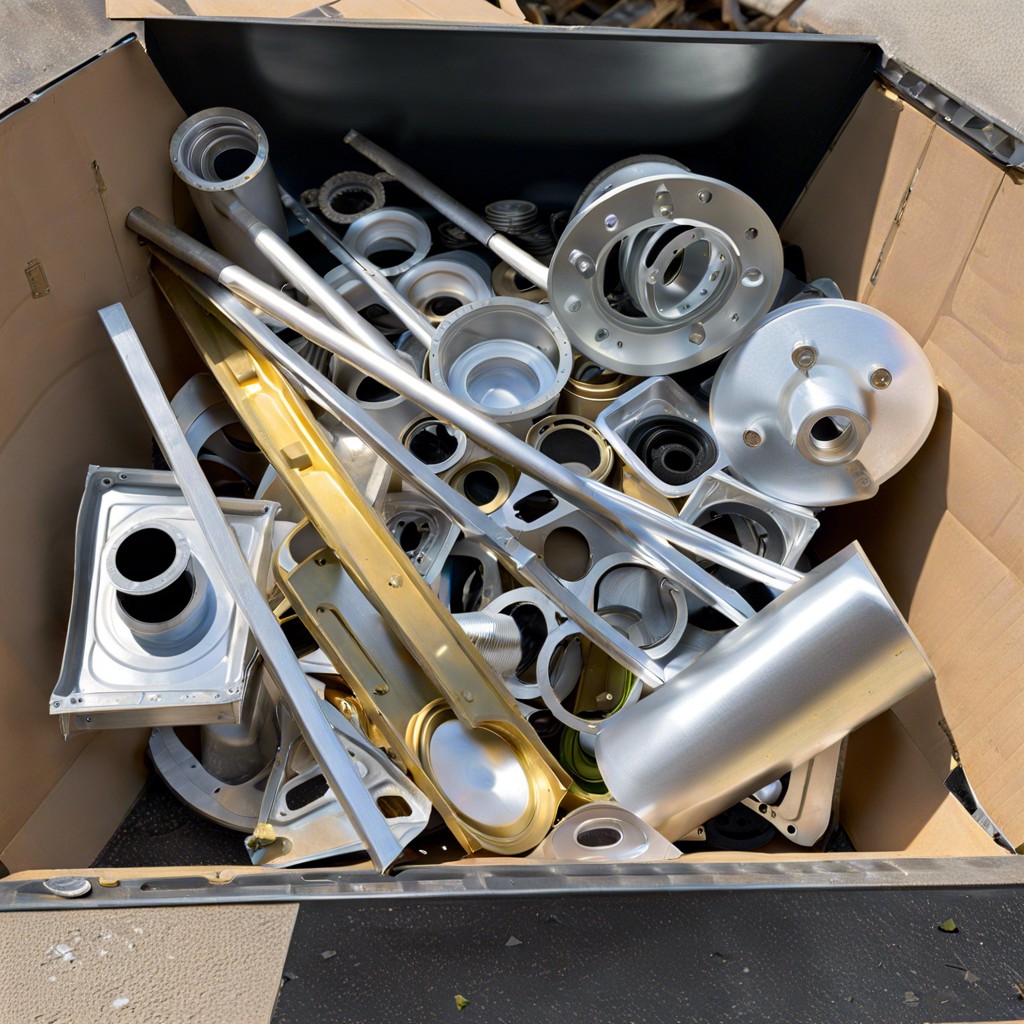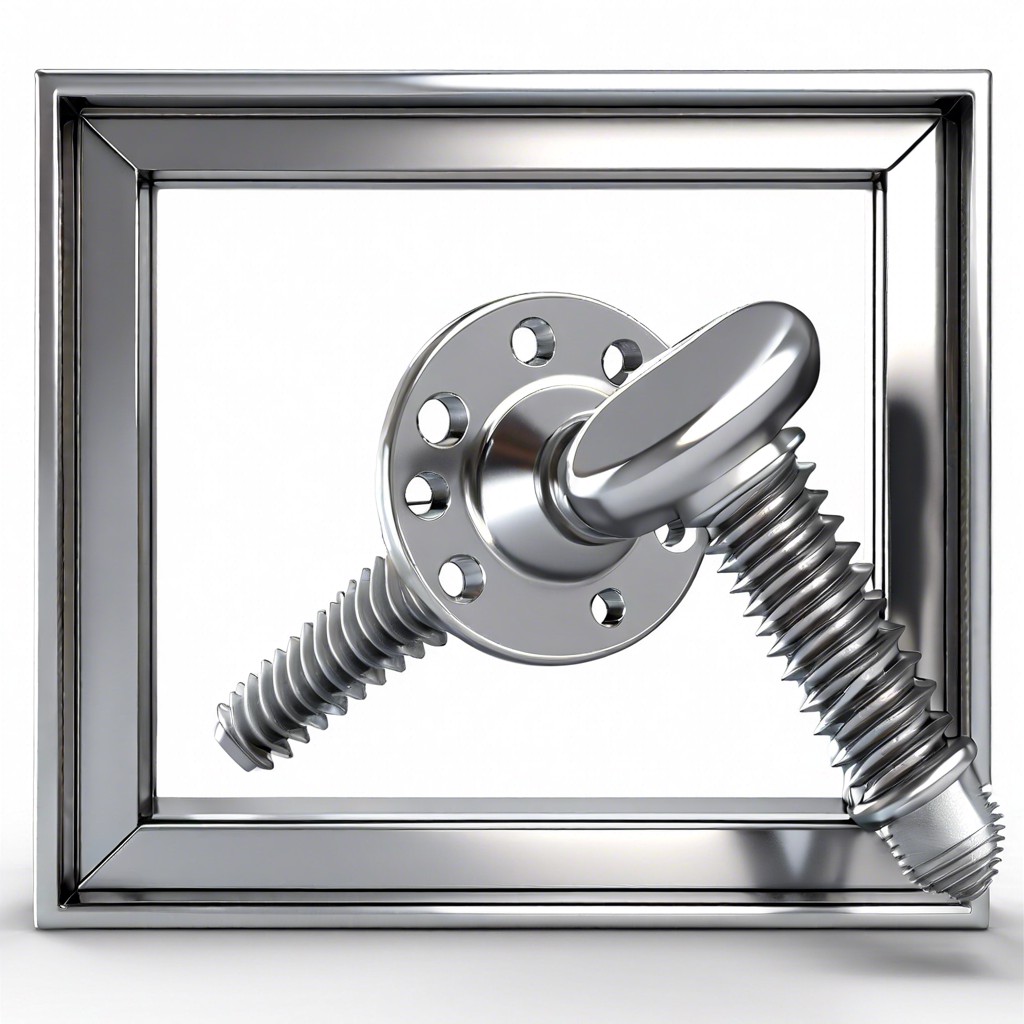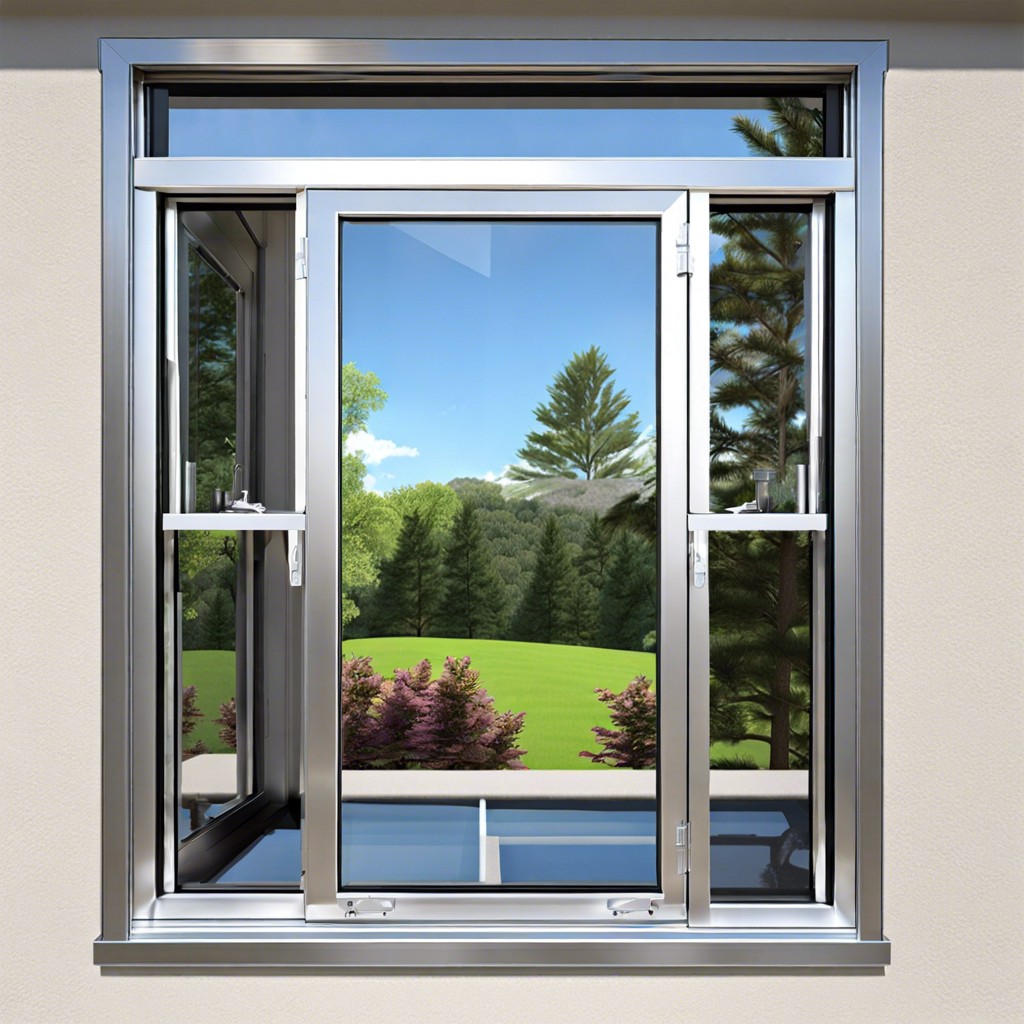Explore the transformative potential of drapery pins in your home decor because these simple tools offer surprising versatility and elegance when used correctly.
Key takeaways:
- Use drapery pins/hooks for hanging curtains of different pleat styles.
- Insert pins into the back pocket or lower backside of each pleat.
- Space pins evenly for uniform gathers or pleats.
- Slide curtains gently along the rod for an even distribution.
- Experiment with pin placements for different curtain styles and effects.
WHAT YOU NEED

Before starting, ensure you have the following items on hand:
- Drapery pins or hooks: These are specifically designed for hanging curtains and come in various shapes for different pleat styles.
- Fabric or panel: Choose a quality that supports the weight of the pins and drapery without sagging.
- Drapery rod: This should already be installed and be suitable for the weight and width of your drapes.
- Measuring tape: To evenly space the hooks and ensure your drapes hang correctly.
- Stepladder: Safety first—make sure you have a stable ladder to reach the drapery rod comfortably.
Selecting the correct drapery pin is crucial for the type of curtain and pleat. Pin hooks are typically inserted into the back of the curtain header and then hooked onto the rings or the rod depending on the drapery design. Being precise in your measurements will contribute to a clean, professional appearance once your drapes are hung.
Inserting Drapery Hooks
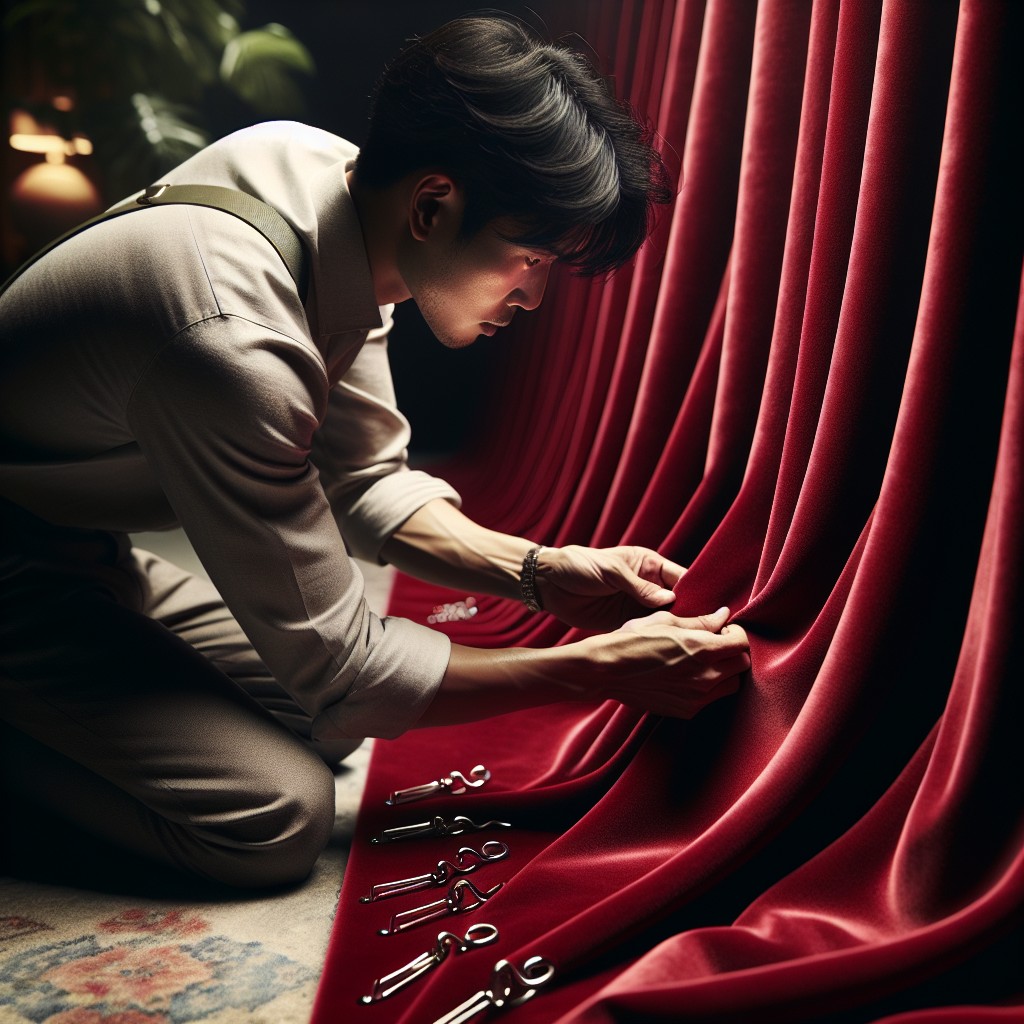
To begin, lay your drapery flat or hang it on the rod temporarily. Next, locate the back pocket of the drapery, where hooks will be inserted. Typically, this is a stitched flap on the reverse side at the top.
Identify the spacing points for your hooks. For uniform gathers, space the pins evenly, usually every four to six inches. If your draperies have pleats, insert the pins into the lower backside of each pleat for a crisp appearance.
Insert the pointy end of a drapery pin into the fabric at your marked spot, ensuring it’s secure but not poking through to the room-facing side. Repeat this process until all pins are positioned.
For additional support in heavy drapes, use two pins per pleat or spacing interval. Always push pins in at a slight upward angle—this helps secure them in place and allows for smooth sliding on the rod.
Remember, the flat hook end should point outward and downward to easily slide into the eyelets of the rings or traverse rod carriers.
Hanging With the Hooks
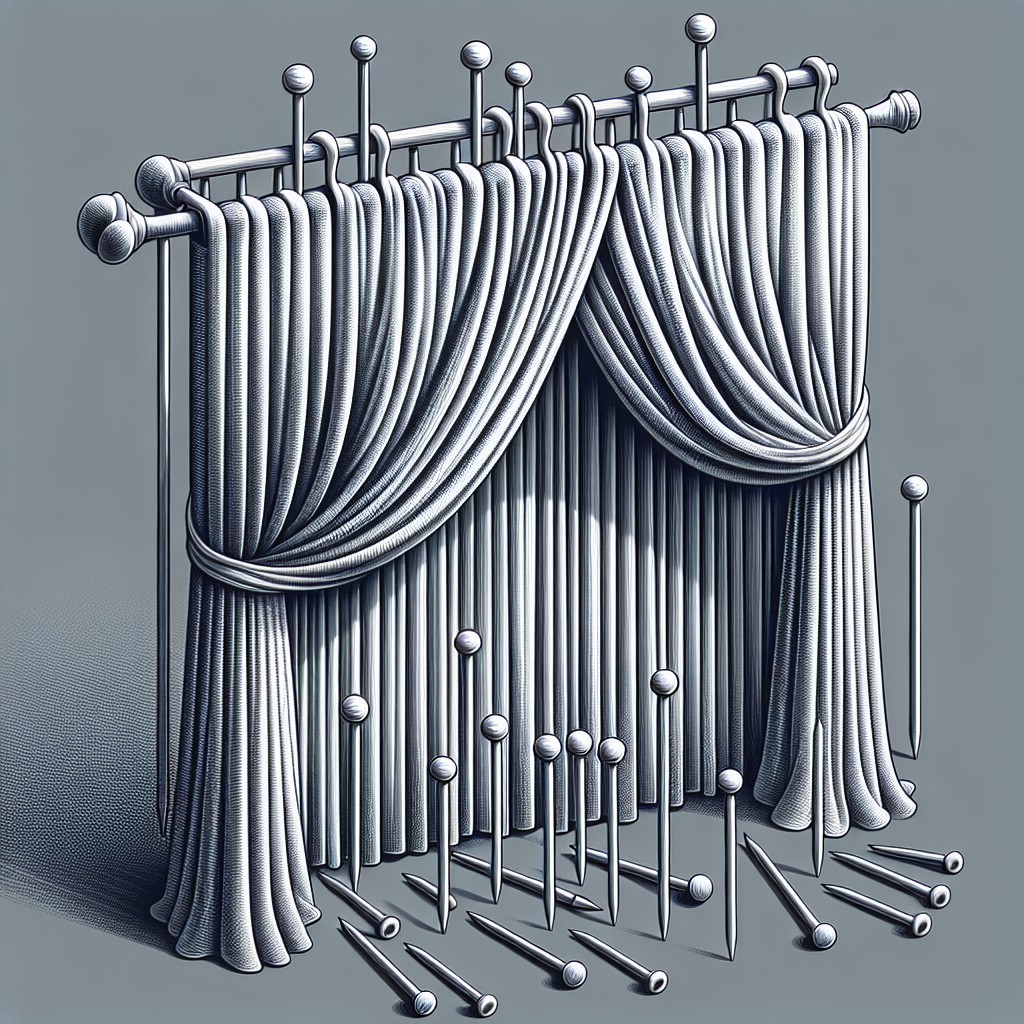
Ensure your curtain rod is securely installed and can bear the weight of your drapes. Begin by carefully lifting the curtains to the rod level.
Guide the pin hooks over the rod, allowing them to rest in the designated slots or rings if your rod is equipped with them. Be mindful to space the hooks evenly to avoid bunching and to achieve a uniform drape.
Slide the curtains gently along the rod to distribute them evenly, making certain the leading and outer edges hang neatly. Fine-tune the pleats or folds for an aesthetic appearance, making sure they are consistent for a polished presentation.
HOW TO GET THE LOOK
Achieving a polished appearance with your curtains is a matter of strategic pin placement. For a full, tailored look, evenly space the pins along the back of the header, typically between four to eight inches apart. Ensure the pins are placed at the same height on each pleat for a uniform hang.
For a contemporary flair, pin at an angle to encourage a sharper pleat that cascades gracefully. If a more traditional style is preferred, pin straight to maintain the structure of the pleats. To accentuate height, consider placing pins closer to the top of the curtain panel, allowing the fabric to fall elegantly and create the illusion of a taller window.
Experiment with different pin placements on a flat surface before hanging to visualize the final result. Remember to handle the drapery pins carefully to preserve the fabric and your desired aesthetic.
Applicable to Any Curtain
Whether you’re working with sheer voiles or opulent velvet drapes, drapery pins offer versatility for various curtain types. Their adaptability stems from their simple design that can pierce through most curtain header fabrics without causing damage.
Key points to keep in mind:
- Drapery pins can be used with rod-pocket, tab-top, and grommet curtains by attaching them to the back of the curtain header.
- For tailored pleats in pinch-pleat curtains, evenly space the pins across the header to maintain uniformity.
- The small size and discreet nature of the pins make them nearly invisible, ensuring they don’t distract from the curtain’s aesthetic.
- Transform flat panel curtains into elegant, structured looks by using drapery pins to create pleats or gathers.
Their ability to conform to different styles and materials makes drapery pins a universal tool for enhancing window treatments.
SHOP
Explore a variety of drapery pins and hooks available at your local fabric store, home decoration outlet, or online to ensure you find the perfect fit for your curtain style and weight. Consider the following when making your choice:
- Pin Size: Select a size that matches the weight and thickness of your drapes. Heavy drapes need stronger, larger pins while lighter fabrics work well with smaller options.
- Pin Shape: Choose from sharp or blunt-ended pins. Sharp pins are easier to insert into heavy fabrics, while blunt pins reduce the risk of injury and fabric damage.
- Material: Metal pins are durable and ideal for most drapery types, but plastic pins are also available for lightweight fabrics and offer a rust-free alternative.
- Quantity: Purchase enough pins for the entire width of your drapery panel, typically one every four to six inches, depending on fullness desired.
- Loop vs. Solid head: Decide between solid head pins for a traditional approach or looped heads for easy attachment and detachment from the rings or carriers.
Be sure to have a few extra pins on hand for unexpected needs or replacements. With the right drapery pins, you can create a polished and professional window treatment with ease.
FAQ
What are the different types of drapery pins available in the market?
The different types of drapery pins available in the market are standard straight pins, pleater hooks, pin-on hooks, slip-in hooks, knape and vibe pins, and metal decision hooks.
How does the placement of drapery pins affect the overall look of your window treatments?
The placement of drapery pins impacts the overall look of window treatments by determining the drape’s height, fullness, and pitch, thus influencing the aesthetic appeal of the window.
What are some common mistakes people make when using drapery pins and how to avoid them?
Common mistakes when using drapery pins include incorrect pin placement, damaging fabric with pins, and not using enough pins for support; these can be avoided by accurately measuring the drapery height, carefully inserting pins, and ensuring even distribution of pins along the drapes.
Recap
